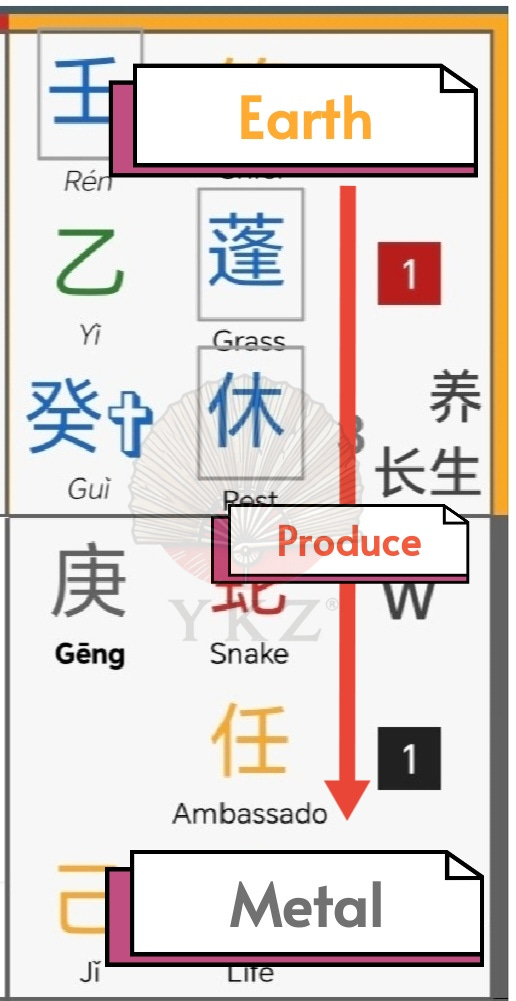🔮 Qi Men Dun Jia Made Easy: Your Gateway to Metaphysical Mastery
Learning metaphysics isn’t a mystery—it’s a map. Let Qi Men Dun Jia (奇门遁甲) show you the way.
🧭 What Is Qi Men Dun Jia (奇门遁甲)?
Qi Men Dun Jia (QMDJ) is one of the most sophisticated metaphysical systems developed in ancient China, woven from centuries of collective wisdom. It blends astronomy, calendar systems, military strategy, philosophy, and cosmology into a holistic framework for understanding time, space, and human intention.
Not merely theoretical, Qimen has been used by sages and strategists alike:
The Yellow Emperor (黄帝) used it in battle against Chi You (蚩尤),
Jiang Ziya (姜太公) , Zhang Liang (张良), Zhuge Liang (诸葛亮), and Liu Bowen (刘伯温) applied it in their political and military pursuits.
🌍 What Can Qi Men Dun Jia Do?
In today’s modern world, Qimen is far more than a divination tool — it is a strategic simulation engine.
It can be used for:
🧑💼 Career and business decisions
💞 Marriage and relationship alignment
💰 Investment timing and asset movement
🩺 Health conditions and recovery outlook
🎓 Academic pathfinding
🤝 Human interaction and collaboration assessment
Imagine meeting someone new. You can cast a Qimen chart to:
Judge their character,
Assess their social standing,
See whether they are suitable for partnership, collaboration, or romance.
Whether it's your problem or someone else's, Qimen allows you to simulate outcomes and decide actions ahead of time. It’s like having a metaphysical GPS for your life.
🧠 Who Can Learn Qi Men Dun Jia?
Many believe metaphysics is reserved for the gifted or the mystical. That’s not true.
You only need three qualities to begin:
🧩 Basic logical reasoning
⏳ Time to study regularly
❤️ Genuine interest — Passion is your best teacher.
With these, anyone can learn Qi Men Dun Jia.
🗂️ Anatomy of a Qimen Chart (奇门盘)
Let’s understand what a Qi Men chart looks like and how it's constructed:
1. Time (时间)
A Qimen chart is generated based on a specific moment — e.g., February 23, 2021 at 9:20 AM.
Each chart is valid for two hours (a traditional 时辰), and every chart is unique to that exact moment.
Different people asking the same question at different times will get different charts.
2. Heavenly Stems & Earthly Branches (干支力)
These are the metaphysical codes derived from the calendar. You’ll often find them in traditional almanacs (黄历).
3. The Qimen Grid (九宫格)
This is a 3x3 grid (9 palaces), where the symbols of Qimen are arranged in a special order.
Each palace (宫位) contains symbolic elements representing:
Heaven Timing (天时): Stars like Tian Peng (天蓬) show the suitability of timing.
Earth Position (地利): Whether the environment supports the situation.
Human Harmony (人和): Through Eight Doors (八门), evaluating interpersonal dynamics.
Divine Influence (神柱): Random forces beyond our control, via Eight Deities (八神).
Structure (格局): The interaction between heavenly and earthly stems reveals development direction.
By analyzing the interaction of these five aspects in a single palace, we can determine a person's current situation and future path.
🧪 Example: Reading a Chart for Yourself
Let’s say someone is born or asks a question on a Ren Yin day (壬寅日).
We use Ren (壬) as the Day Stem, and locate it within the Qimen chart.
It lands in Yang position (养地), which means “Nourishment” — a stable, mildly supportive position.
It indicates that while you’re not in a growth spurt, you can sustain your momentum.
Then we look at:
Deity: Chief (Zhi Fu 直符) – reflects external uncontrollable forces.
Star: Grass (Tian Peng Xing 天蓬星) – reflects timing; if weak, the time isn’t right.
Door: Rest (Xiu Men 休门) – shows your network and cooperation with others.
Structure (Ge Ju 格局) – the combination of Heaven Plate Stem and Earth Plate Stem reveals how the matter evolves — toward success or setback.
🤝 Example: Asking About a Friend
If you’re asking about someone else (e.g., a sibling or friend), we use the Month Stem (月干) as their representative.
Let’s say it’s a Geng Yin month (庚寅月), so we use Geng (庚) to locate their position.
If Geng lands in Di Wang (帝旺), your friend is thriving externally.
But if the Deity is Snake (Teng She 腾蛇), a malefic force symbolizing b, it means your friend’s current success may be unsustainable or deceptive.
If the Door is Life (Sheng Men 生门) and it lands in a strong palace, that reflects great interpersonal skill and helpful social connections.
The Star is Ambassador (Tian Ren 天任) — a stabilizing force — paired with Sheng Men, suggests stable assets or property strength.
However, if the Structure is Punishment Structure (Xing Ge 刑格) or worse, Fan Yin (反吟) — this warns of upcoming losses, particularly in wealth.
🔍 Evaluating Relationship Compatibility
To assess your relationship with that friend, we compare your palace (with your Day Stem) and their palace (with the Month Stem).
Let’s say:
Your palace is Earth element (土),
Their palace is Metal element (金).
In the Five Element cycle: Earth produces Metal (土生金).
This means you’re supporting them. They benefit from you more than you benefit from them.
This shows a one-sided exchange, where you may end up doing more of the giving.
🧠 Closing Thought
Qi Men Dun Jia isn’t just an esoteric craft — it’s a practical lens to decode real-life decisions and relationships.
With some logic, time, and love for the art, you can begin to see the invisible and predict the probable.
Next:










